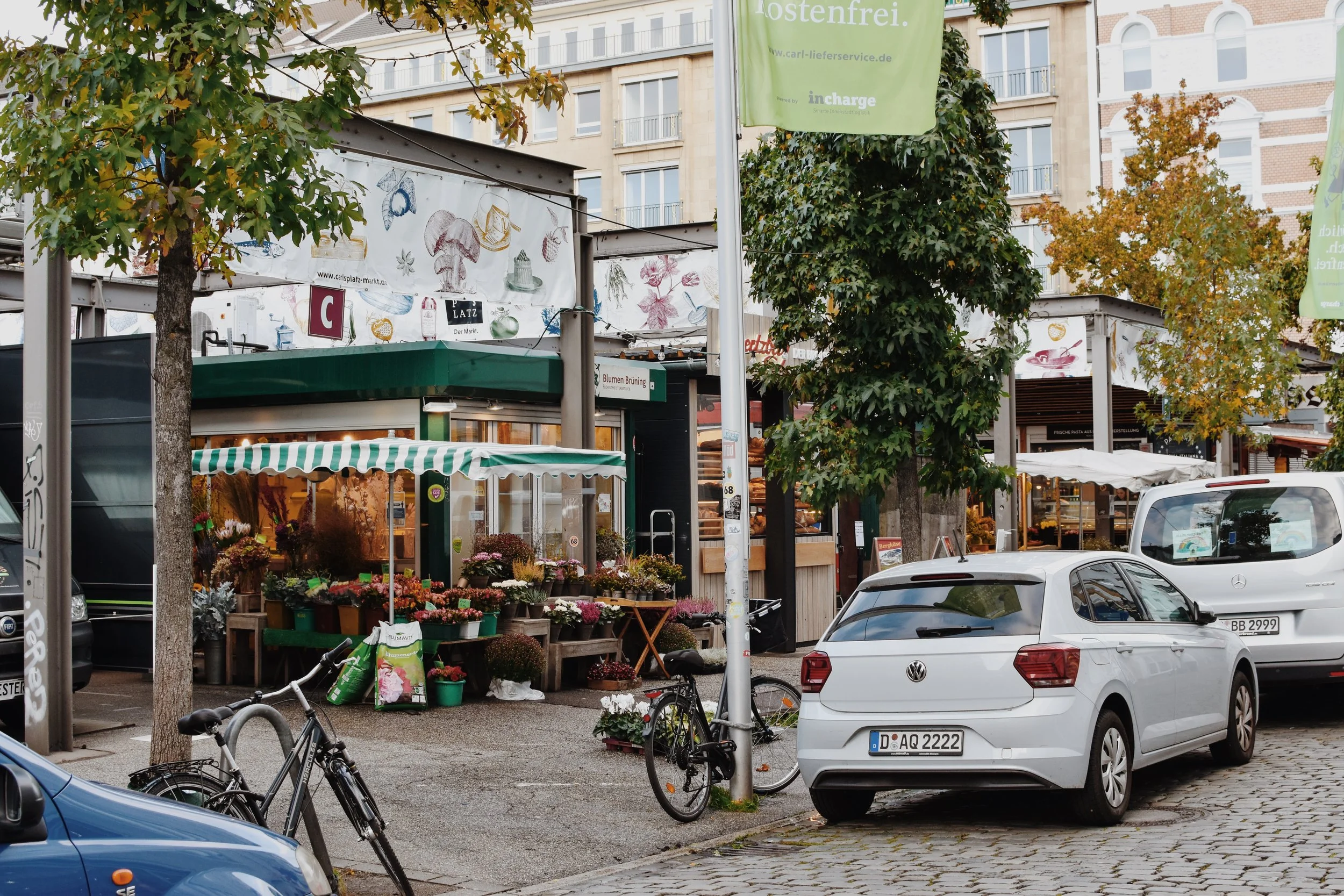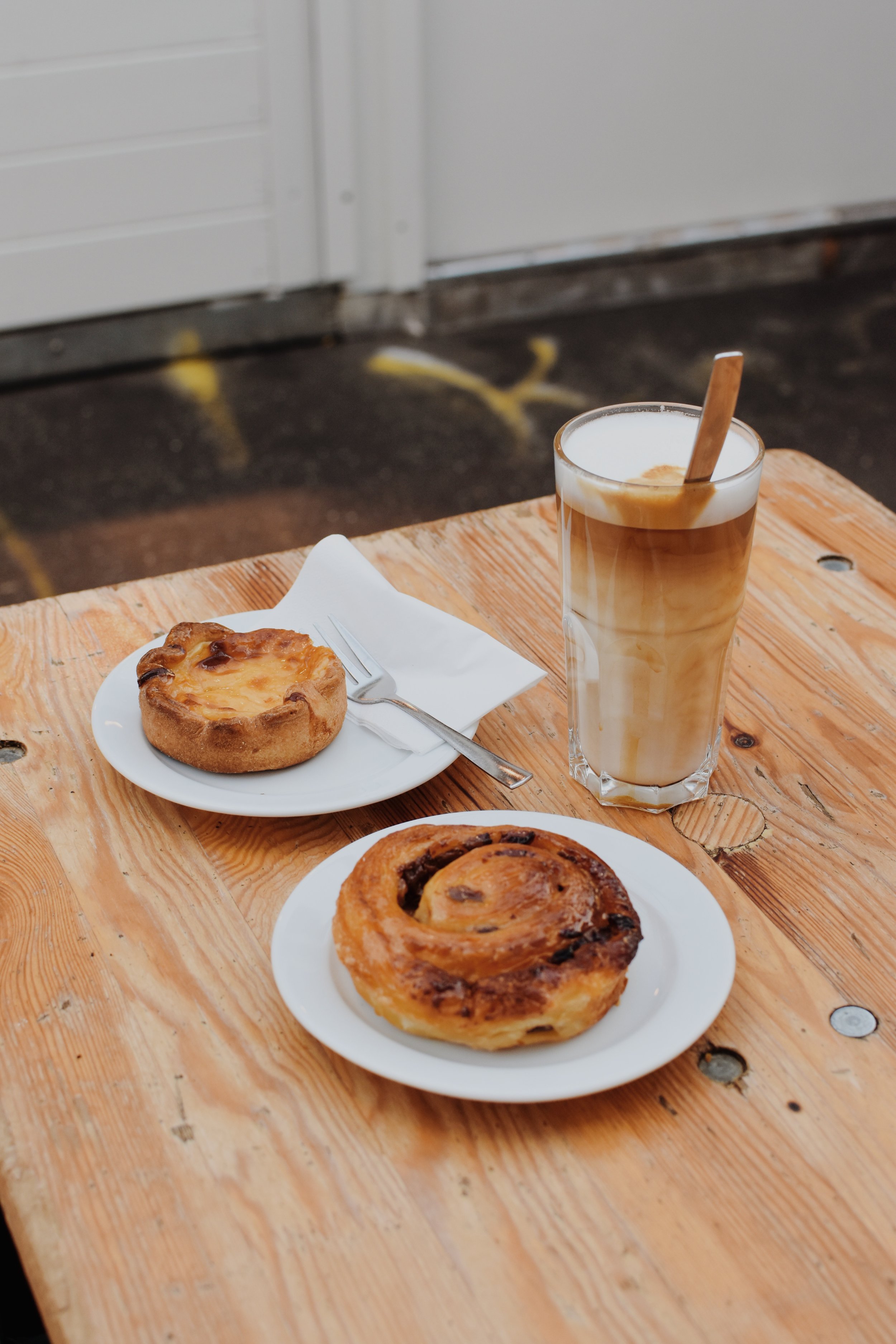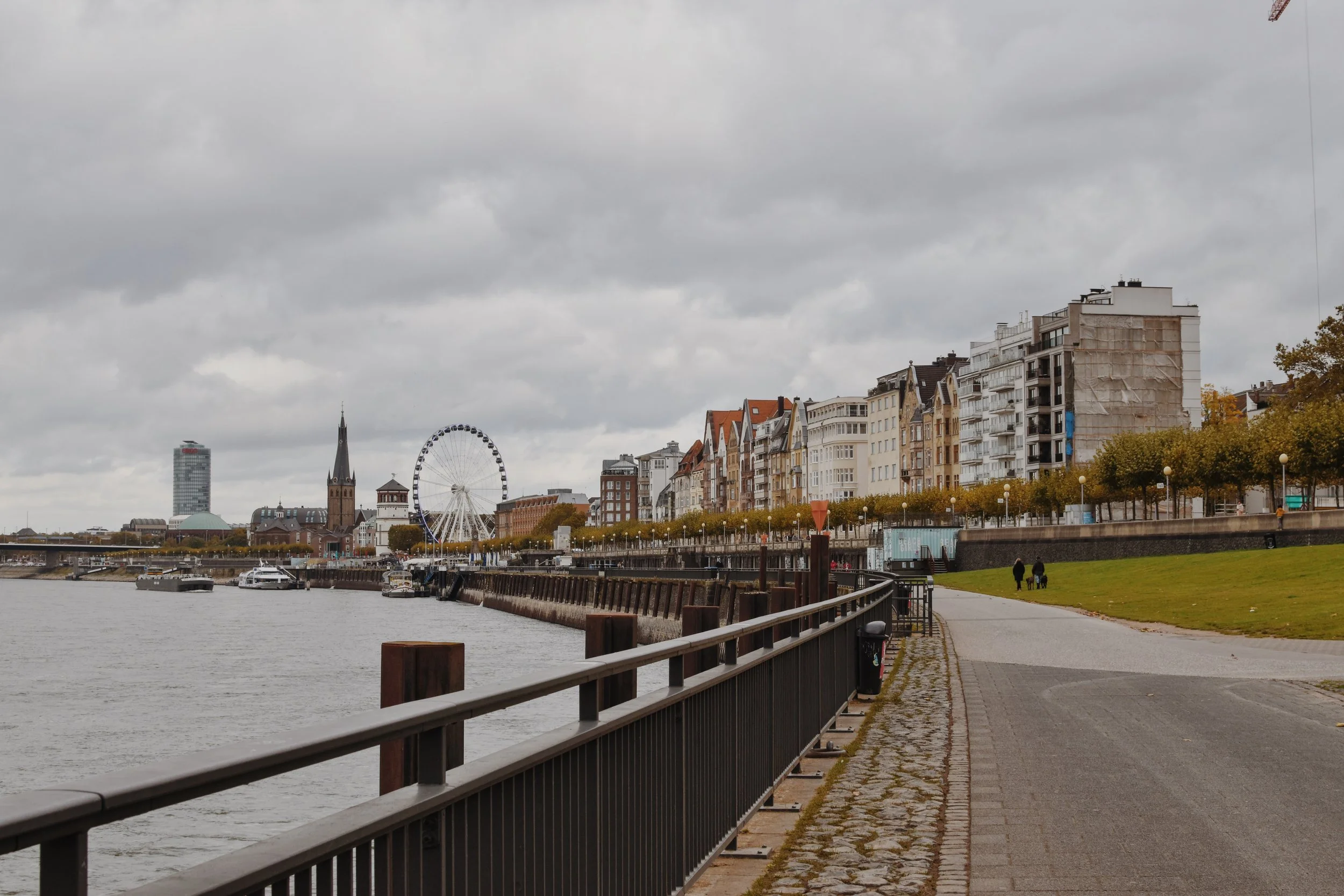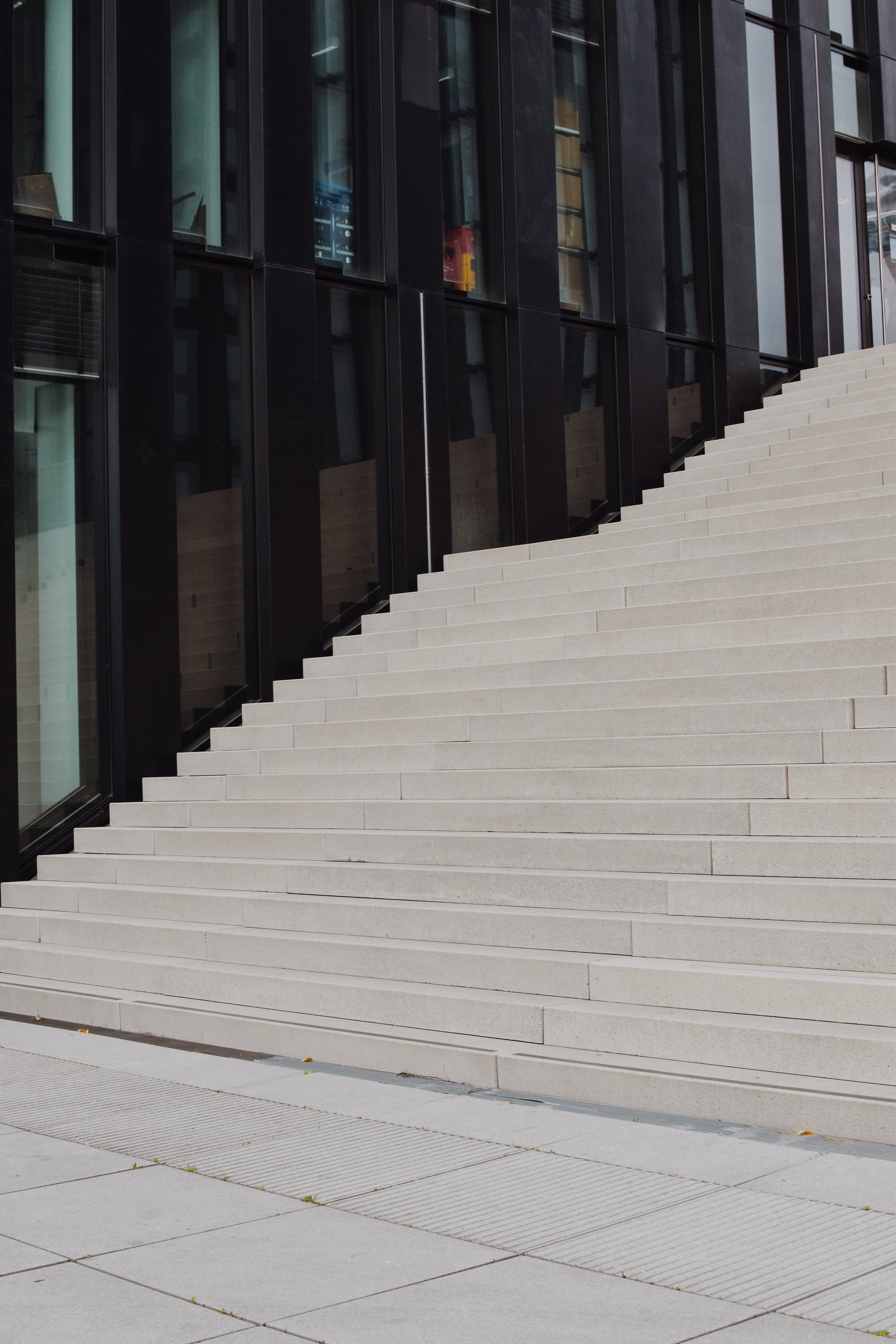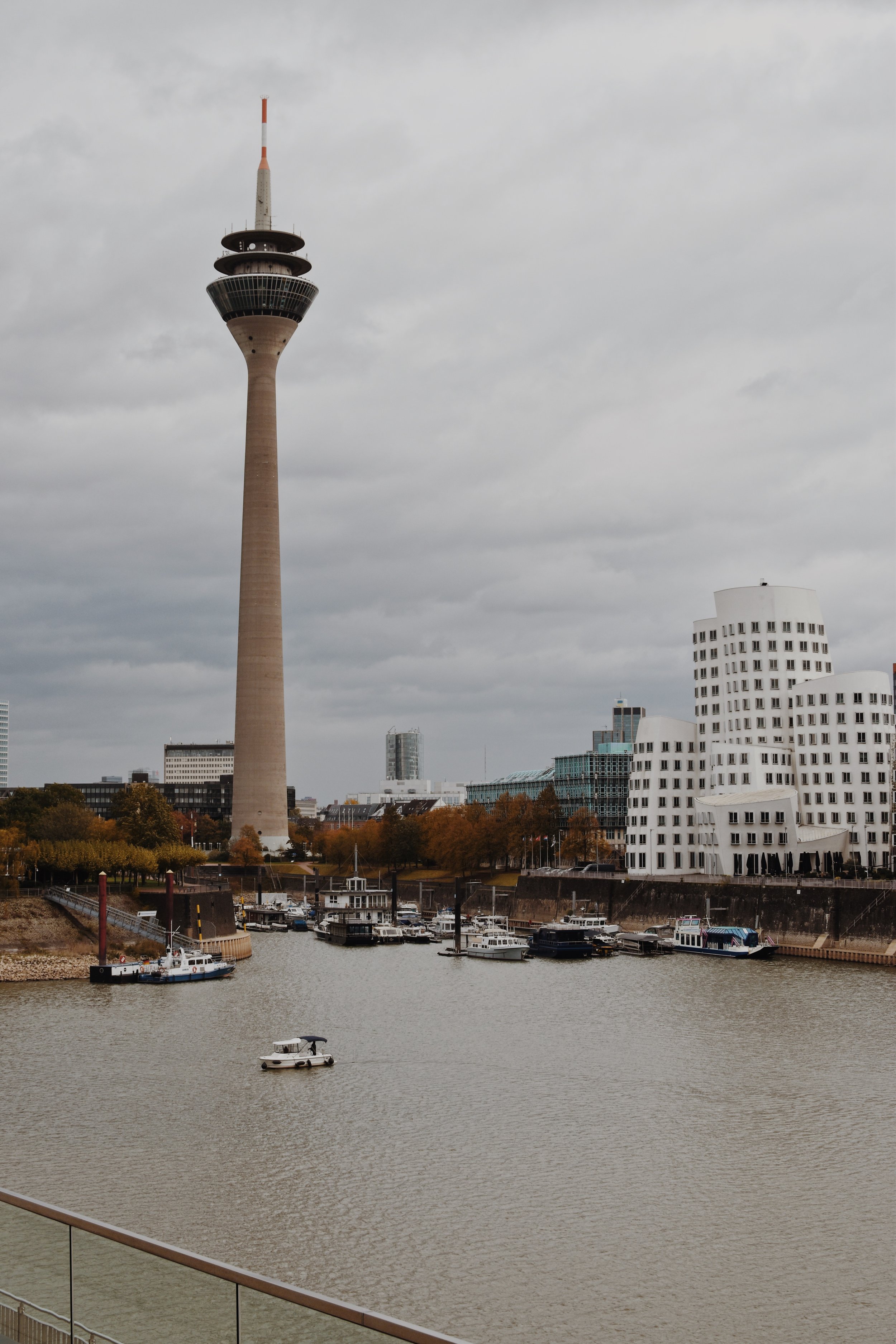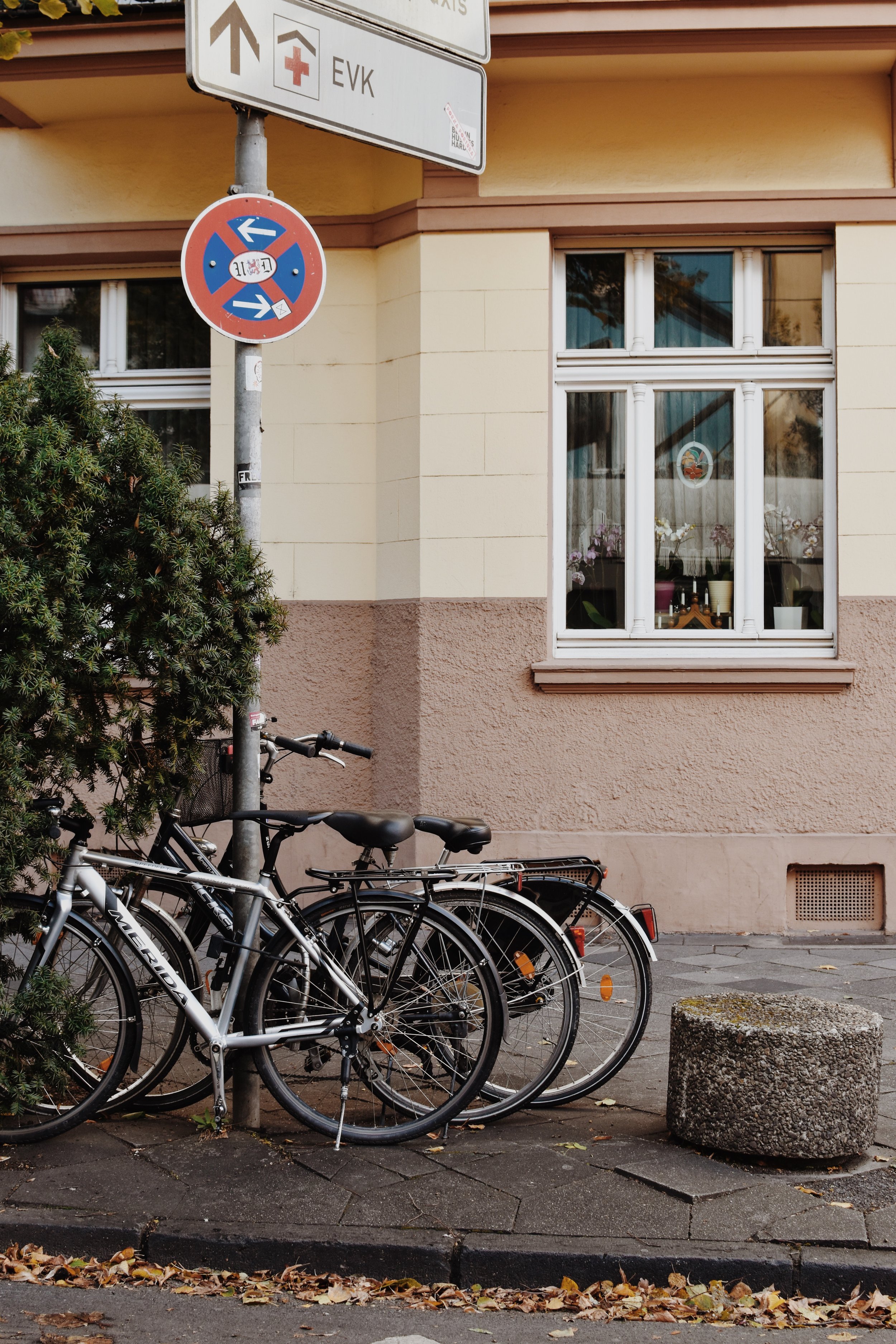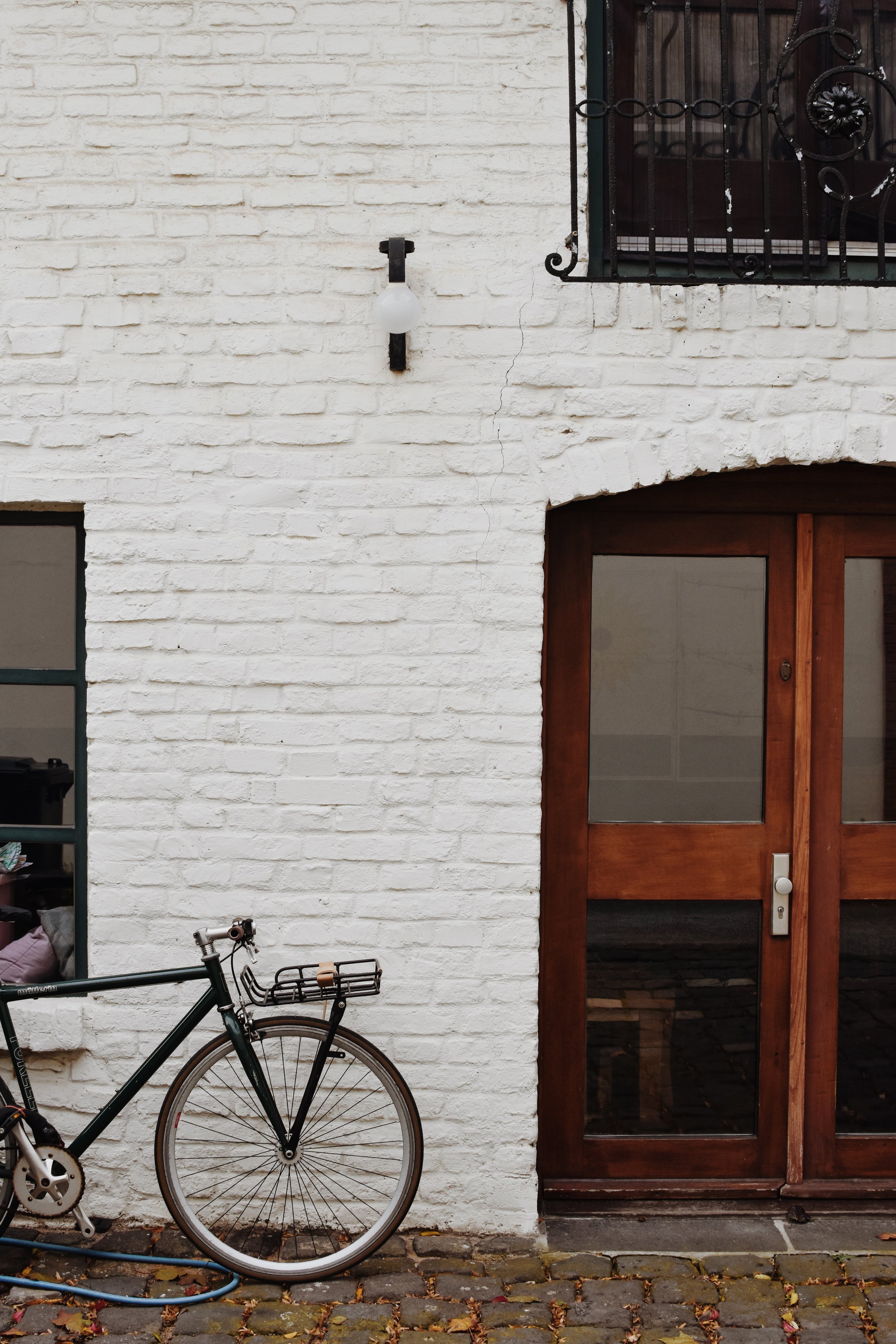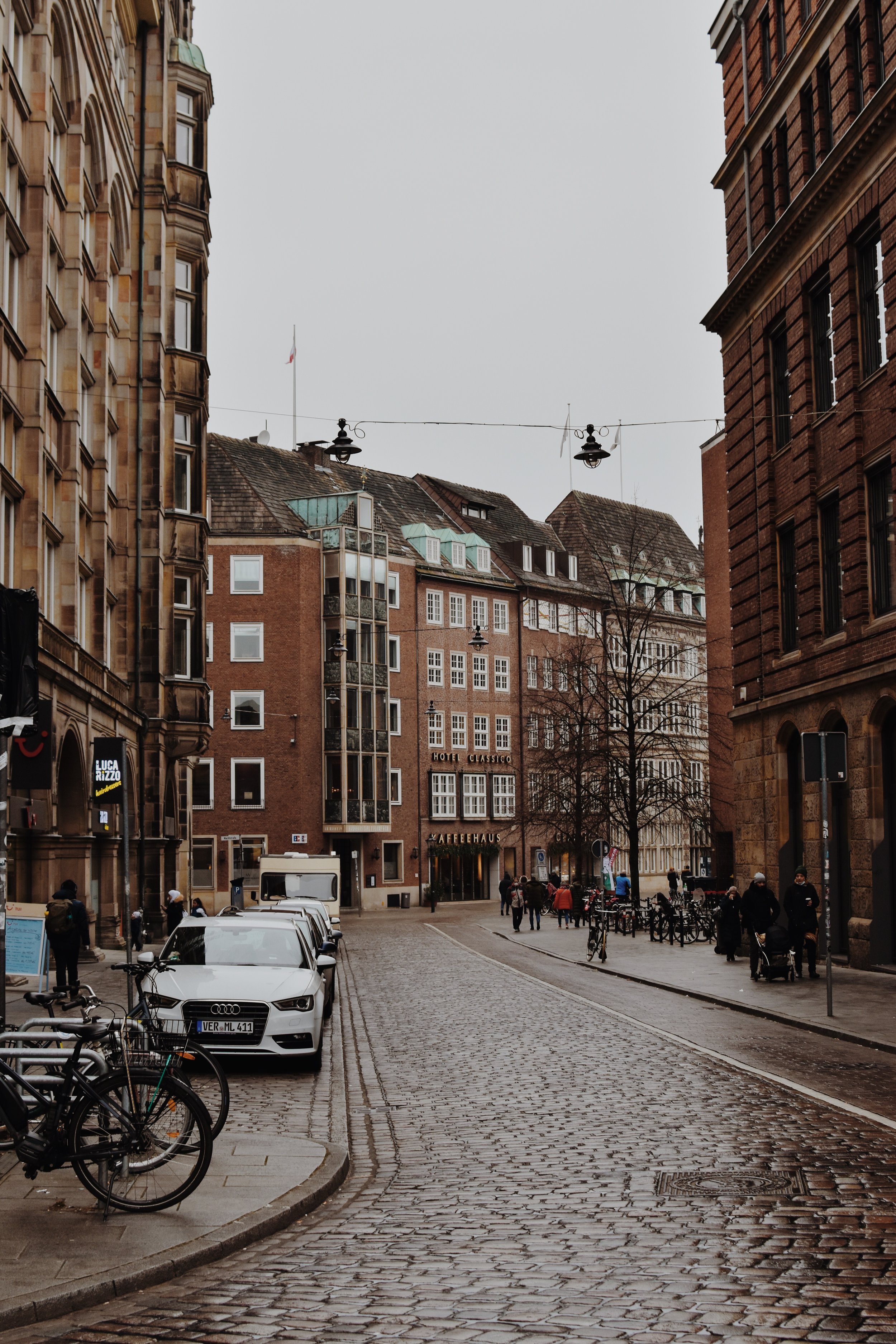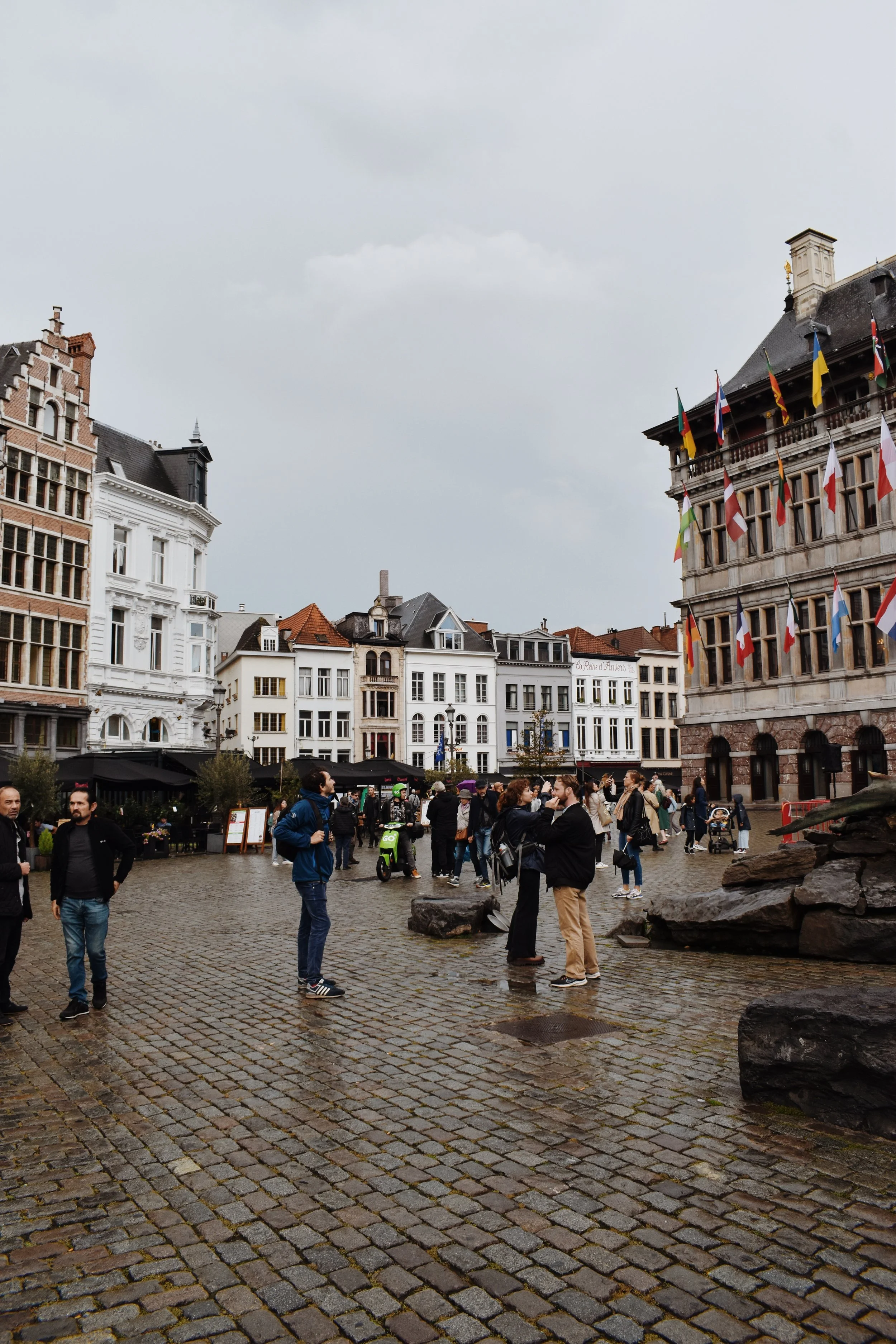Düsseldorf City Break Itinerary: The Best Things to See & Do
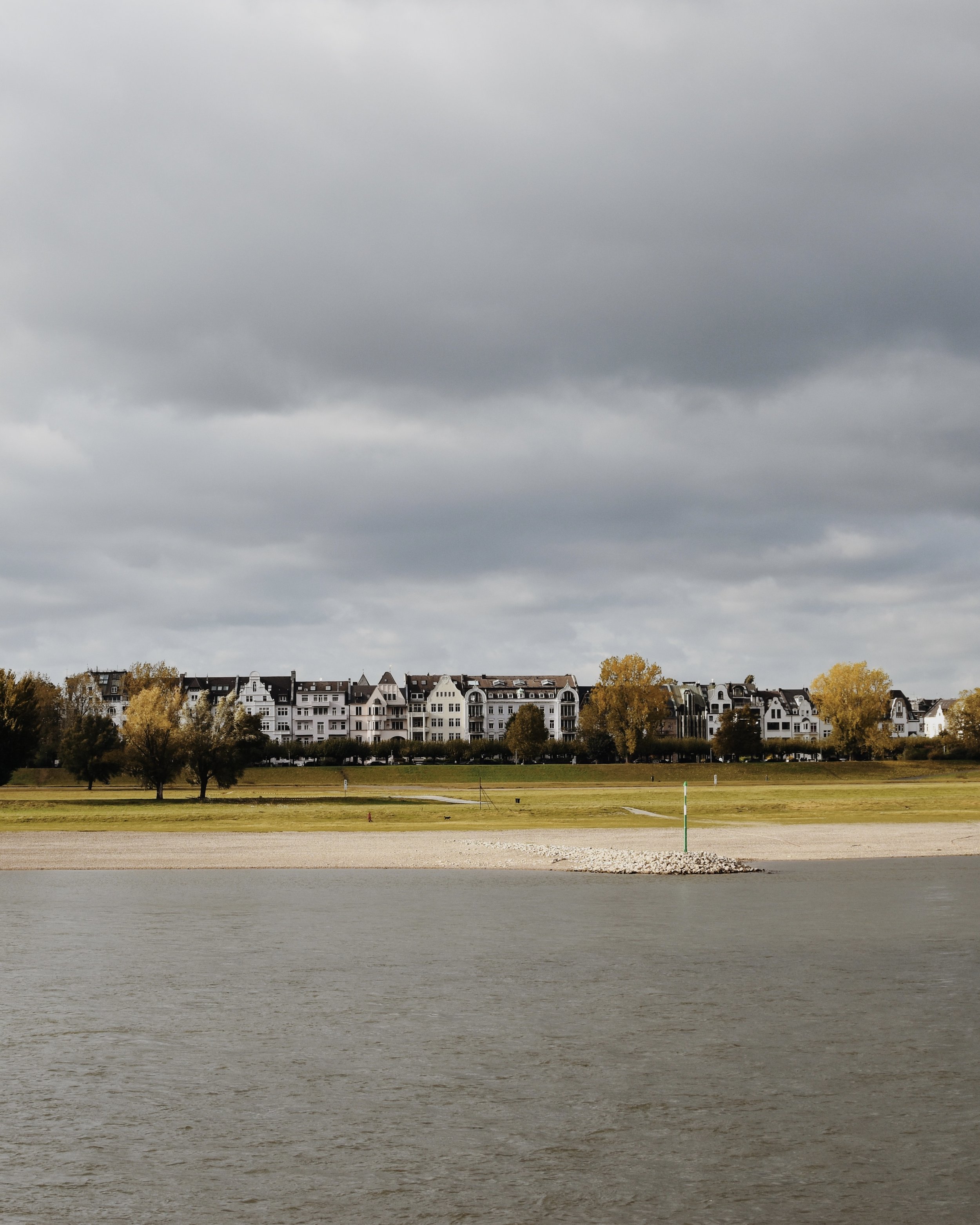
When it comes to city trips in Germany, most would favour the storied capital of Berlin, the Bavarian cool of Münich, the major transport hub of Frankfurt, or the historic port city up north of Hamburg.
However, break away from these traditionally popular cities and you’ll find there are many smaller ones well worth stopping by.
Located in the Western part of the country is Düsseldorf, a modern city known for being glitzy and fashionable.
In this article, you’ll find all there is do in the city along the Rhine river, perfect for a weekend city break.
The Ultimate Düsseldorf Itinerary
Carlsplatz
Begin your day at Carlsplatz, a small but cute market south of the old city.
Open daily except on Sundays, fuel up on coffee at Pure Coffee by KaffeeReich, with a wide selection of pastries to pick from at the counter.
Then, explore the rest of the aisles and peruse the stalls selling cheese, fruit, seafood and poultry, alongside a handful of florists.
Altstadt (and Altbier)
Of course, you can’t miss the historic city centre.
A network of cobblestone streets filled with endless restaurants and bars pouring out onto the pavements, these streets eventually lead to the Rhine river.
The best thing to do of course, is to just wander round and get lost, as Düsseldorf’s altstadt is genuinely quite pretty.
Here’s where you’ll also find altbier, which literally translates to old beer.
There are five microbreweries within walking distance of each other, and you can even join an Altbier Safari!
Königsallee
Düsseldorf has a reputation for being glitzy and swanky, and Königsallee is a canal flanked with designer boutiques on both sides.
Think Passeig de Gràcia in Barcelona, Champs-Élysées in Paris etc.
Even if you’re not there to burn a hole in your wallet, the tree-lined canal itself is really pretty and worth stopping by for a photo opportunity, as the colours of the leaves change with the seasons.
Rheinuferpromenade
From Düsseldorf’s shopping district, the riverfront is just a stone’s throw away.
The Rhine river promenade offers beautiful waterfront views, and is best enjoyed on a sunny day, when many locals and visitors alike flock to the bank to soak up the rays.
Here’s also where you’ll get iconic views of the Rhine Tower, skyline and bridge!
If you’d like, you can hop on a boat tour to see the city from the water.
Medienhafen
Continue walking down the river promenade and pass the iconic Rhine Tower to enter the Media Harbour district, or Medienhafen, as it’s known in German.
If the altstadt further up the river represents Düsseldorf’s history, the Media Harbour is an interesting contrast and represents Düsseldorf’s newer, avantgarde outlook.
The area is pretty historic as well, but fell by the wayside when maritime trade was no longer the heartbeat of the local economy.
The Media Harbour was then revitalised in a massive way, and you’ll now find an interesting collection of buildings with quirky architecture, many of them being offices and co-working spaces for not just media companies, but fashion and design firms as well.
Pro-tip: Head up the stairs next to the Hyatt Regency Düsseldorf where you can find another stunning lookout point, this time from the opposite side of the river bank.
Little Tokyo
Did you know that Düsseldorf is home to a large Asian population?
Nowhere is this influence felt than in Little Tokyo, an area of yes, many Japanese restaurants, and even Hotel Nikko, an international chain of hotels of Japanese origin.
But besides the ramen shacks and comic book shops, you’ll also find plenty of Vietnamese, Indian, Chinese, and Korean restaurants and supermarkets stocked with Asian produce.
Na Ni Wa is a very popular restaurant selling ramen, and you’ll often find snaking long queues, even in the quieter shoulder seasons.
Right next door is Soba-An should you prefer soba.
Bilk
I always enjoy seeking out the more local, and well, hipster areas of a city.
Vintage shops, quaint coffeehouses and unassuming bakeries?
Sign me up.
You’ll find this and more in the neighbourhood of Bilk.
Largely residential, you’ll find many third wave cafes.
I visited Covent Garden Coffeehouse, which had a lovely view overlooking the street outside.
Aside from Covent Garden, there’s also Cafe Buur, Espresso Perfetto Bar, manko café + workspace, Süße Erinnerung, which are all highly rated places in the neighbourhood.
After a dose of caffeine and bakes, head on over to Wandel Antik Vintage, a vintage store so huge and filled with so many incredible finds, that it felt more like a living museum than a run-of-the-mill antique store.
Kiefernstraße
If the area around Königsallee is mainstream and upscale, Kiefernstraße is a delightful introduction to Düsseldorf’s alternative scene.
Kiefernstraße is a street of houses where street art literally comes to life.
What used to be an area for squatters gave rise to a cultural scene more left field.
Marvel at the vibrantly painted buildings, each one seemingly more elaborate than the next.
You’ll even find a punk club by the name of AK47 here.
Oberkassel
If you have time, hop on the U-Bahn and cross the river, and into Oberkassel.
Aside from the main artery of retail stores, bakeries, restaurants and more, Oberkassel is a very pretty neighbourhood that is largely residential, but lovely to explore and get lost in the streets.
Where to Stay in Düsseldorf
During my time in the city, I stayed in the niu Tab, part of a chain of hotels all around Germany (and in other neighbouring countries as well like The Netherlands) which was pretty budget-friendly.
It’s not a hostel dormitory, but if you’re looking for a fuss-free place to stay without breaking the bank, I’d highly recommend the niu Tab.
It’s located a bit of a distance from the city centre, but Düsseldorf is well-connected by public transport, so there’s not much of an issue there.

